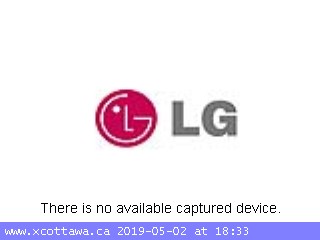Sheila's Nutrition Digest Vol. 6 - How to Assess Your Diet
By: Sheila Kealey (2005/05/10)
|
Certainly it's not desirable (or advisable!) to convert all fine dining experiences into numbers, but getting an idea of how your typical diet stacks up can be important for your health, and is especially helpful if you're considering making some changes. For example, athletes may want to know if they're consuming enough carbohydrates to fuel and recover from their workouts, or people trying to lose weight would benefit by knowing where their excess calories are coming from. So. . . where do you start? Analyzing dietary intake used to be a tedious task and almost exclusively the domain of nutrition professionals, who had to look up individual foods in tables, record this data, and add up the amounts of each nutrient. Advances in technology, the Internet, and widespread availability and quality of food databases has changed all that. Nutrition professionals and consumers alike can benefit from new software and web-based programs that make tracking and analyzing dietary intake much easier. Here's a brief guide to the options you might have, from expert advice to figuring things out on your own. EXPERT ADVICEConsult a dietitian, who can perform a detailed nutrient analysis and provide informed feedback and advice on improving your diet. To find a dietetics professional in your area consult one of these resources:
ON YOUR OWNIf you decide to track what you eat, you'll quickly realize that it can be a time consuming task! You'll need some obsessiveness to carefully monitor and measure every morsel that passes through your lips, and time and patience to record this data. Need inspiration? Consider that cyclist Lance Armstrong meticulously weighed all his food at times to fine tune his diet to match his performance goals. You have a number of resources to help you, from food labels to sophisticated software. Diet analysis programs vary greatly in number of features, capabilities, and the extent of their food databases. Resources (Free)
Online and Downloadable Programs ($$)There are many diet analysis programs that you can buy - this is just a sampling. Personal use versions cost anywhere from $15-$75, professional versions to manage many clients range from $500 to $1000, while the main research-based program costs over $8000. Many programs let you download a trial version to see if it suits your needs. Personal Use
Professional Use/Research
Whether you check the nutrition of a food occasionally, or decide to monitor your daily diet more closely, you have a tremendous amount of resources at your fingertips to make informed decisions about the foods you choose to eat. Research shows that some form of dietary self-monitoring is a helpful strategy to improve your diet, so your efforts may be rewarded by better health! |
HOW TO MONITOR YOUR DIET(Printable Version)Nutrition researchers have written thousands of publications evaluating the most accurate techniques to assess what people eat. This is an important field of research since many dietary recommendations and research findings are based on these assessments. Studies show that most people eat a lot more than they realize. Research also shows that even when monitoring their diet, people tend to underreport what they eat. Underreporting is so common that some studies use statistical strategies to correct for this error. Here are some tips to ensure that you get the most accurate snapshot of your diet: Days to Record: The optimum number of days to obtain your average dietary intake is three weekdays and one weekend day. The days don't have to be consecutive, but try to choose 24-hour periods that will most clearly and accurately reflect your usual dietary pattern. If four days is too daunting, select one day of the week that you consider to be the most representative of your usual food intake. Write it ALL down. Keep a small notebook handy and write down all foods and beverages consumed. Be as inclusive as possible. Be Specific. The more specific you are with brand names and measurements, the more accurate your analysis will be. Whenever possible, measure the food. For example, for breakfast, instead of recording "bowl of Cheerios," record 1.5 cups of Cheerios with 250 ml nonfat milk. Consider me asuring the volume of your favorite bowl to save you some time. Don't forget about . . . condiments and "extras" since these can really add up. Small things such as butter on toast, milk in coffee, mayonnaise on a sandwich, dressing on salad, sugar on cereal, handfuls of pretzels, etc. Be patient when entering items into your software. It will take much longer as you first figure things out (and some software is more user friendly than others!). Most programs allow you to create "recipes" standard meals, or frequently consumed foods, which makes subsequent data entry sessions much faster. |

 Do you ever wonder how the food you eat translates to calories, fat, carbohydrates, or protein? Or question if your diet is lacking important vitamins or minerals? But maybe you prefer to savour your Starbuck's caffe mocha and maple oat scone without knowing you're consuming almost 900 calories and 44 grams of fat . . .
Do you ever wonder how the food you eat translates to calories, fat, carbohydrates, or protein? Or question if your diet is lacking important vitamins or minerals? But maybe you prefer to savour your Starbuck's caffe mocha and maple oat scone without knowing you're consuming almost 900 calories and 44 grams of fat . . .


